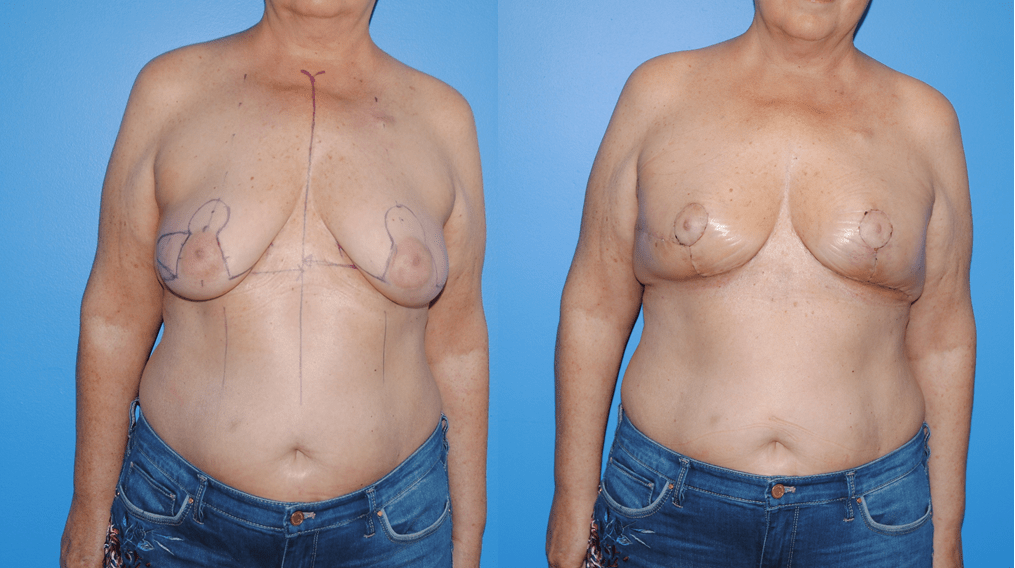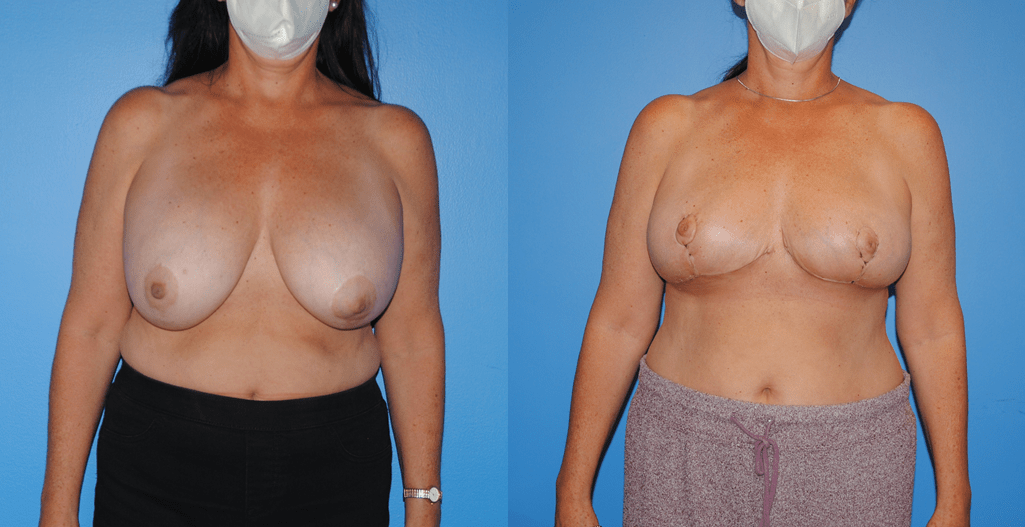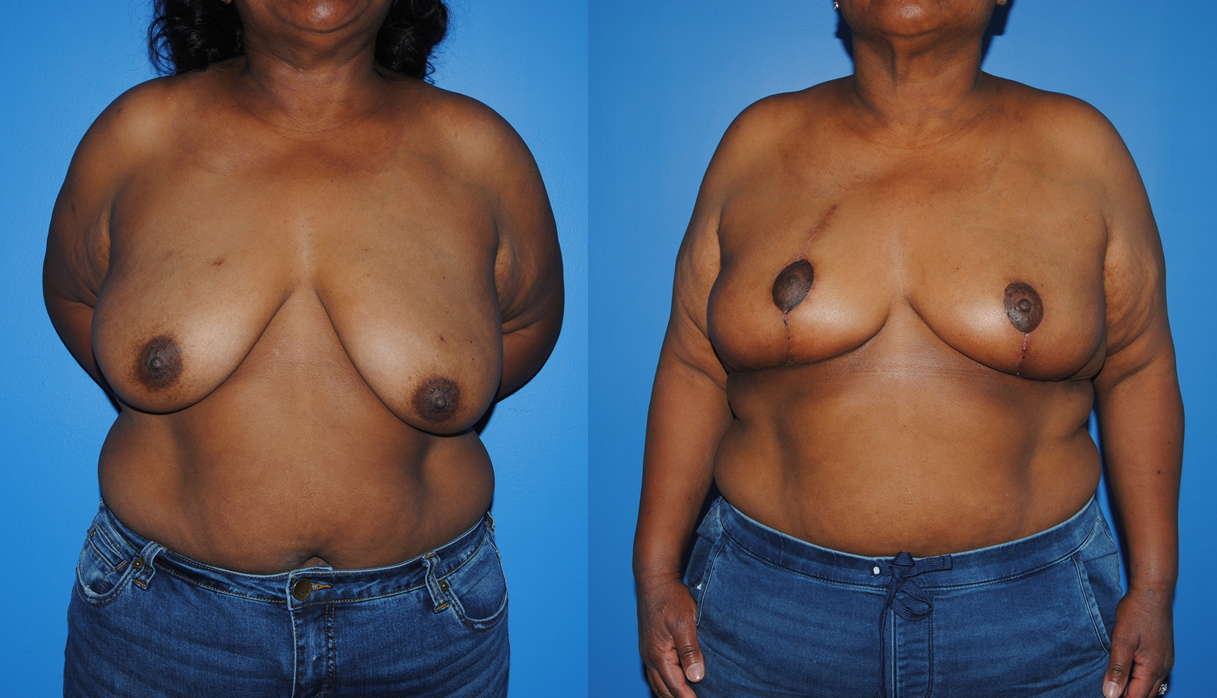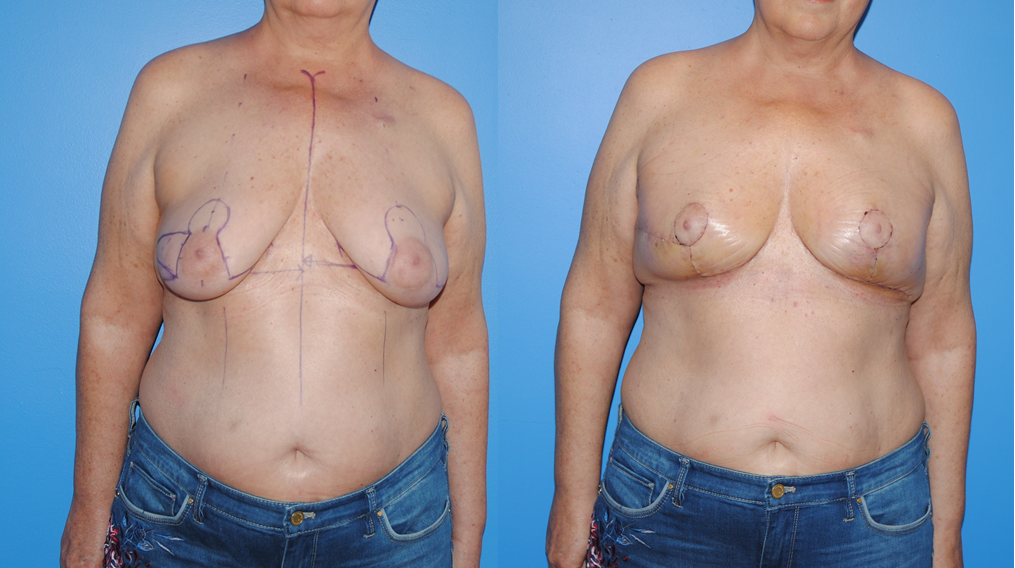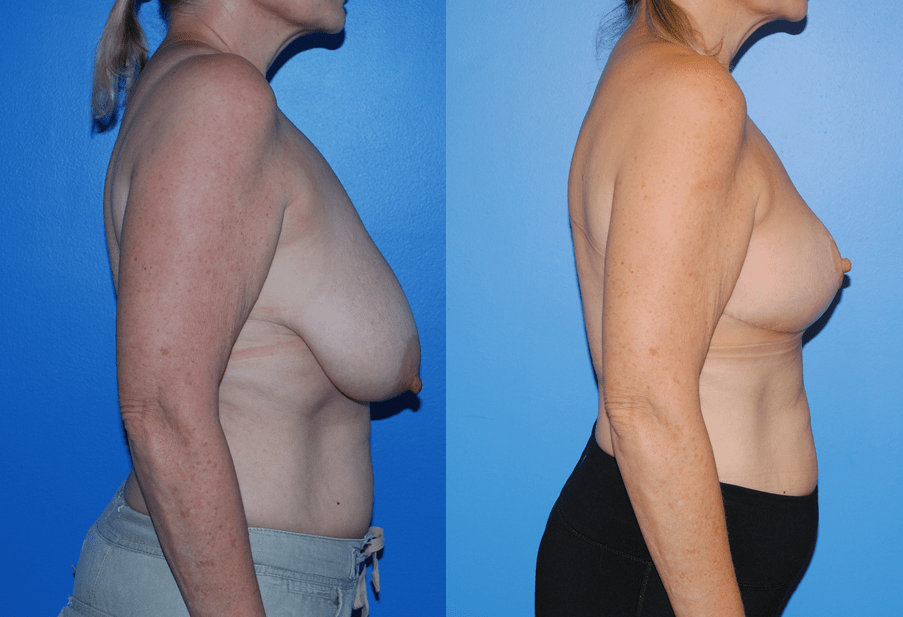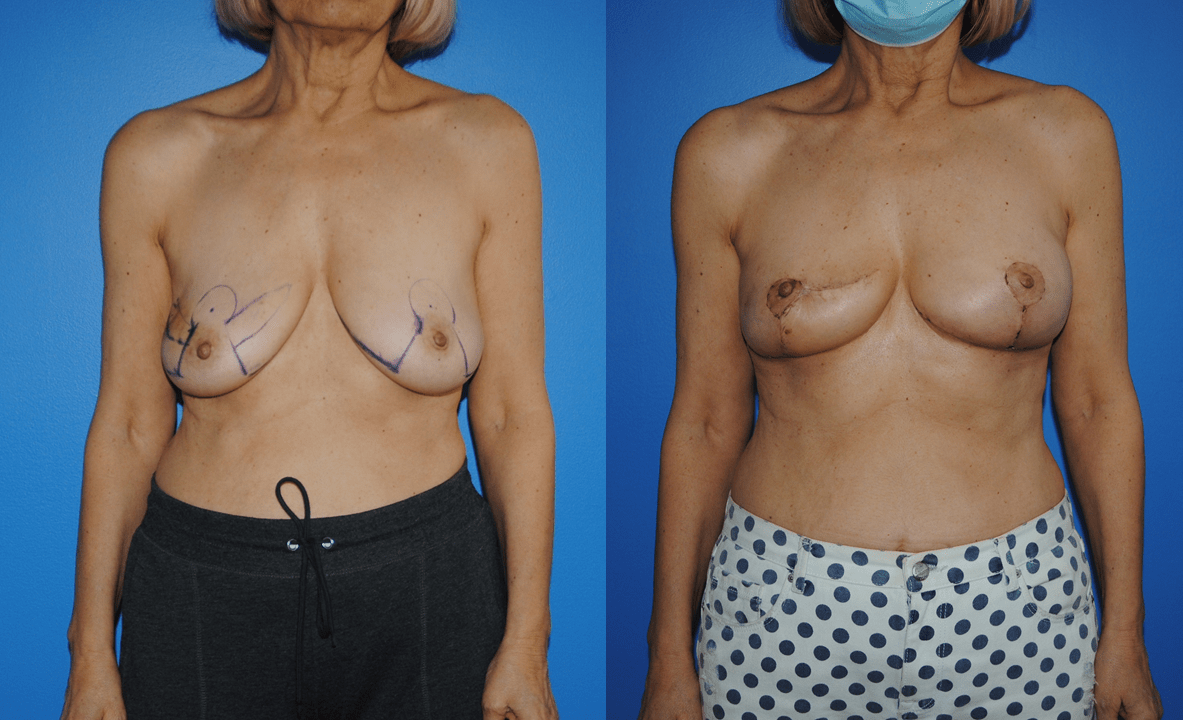When breast cancers are located close to the skin surface, it is often helpful to remove the skin above the tumor during surgery for wire directed segmental resection. When the tumor is located outside of the standard Wise-mastopexy pattern, the pattern is adjusted to remove the skin over the breast cancer.
